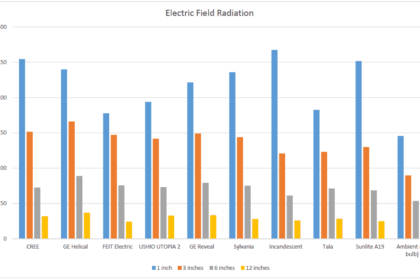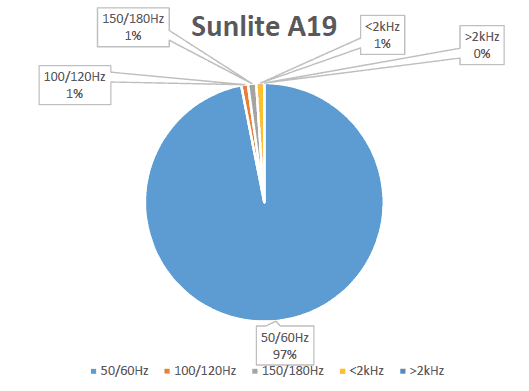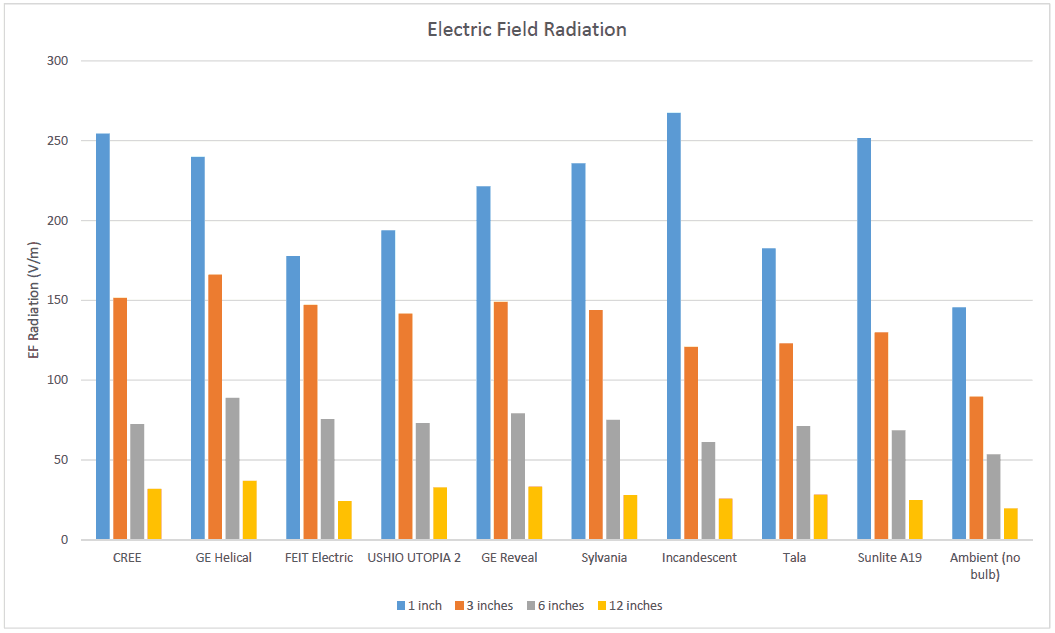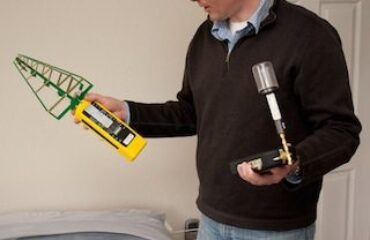Dirty Electricity from LEDs

Dirty Electricity from LEDs
People interested high fidelity sound systems or low-EMF environments want to minimize electromagnetic interference (AKA: EMI, High-Voltage Transients, Electrical Noise, and Dirty Electricity) from lighting systems. Compact fluorescent lightbulbs (CFLs) – the curly pig tail variety with some mercury in them – are notoriously “dirty” and create significant EMI (Electromagnetic Interference). As the lighting industry and energy codes gravitate toward Light Emitting Diodes (LEDs), more and more consumers are curious about dirty electricity from LEDs.
LED Dirty Electricity Pie Chart for One Bulb
Method for Testing Dirty Electricity from LEDs
While there are many methods for testing dirty electricity, this is how we embarked on this quick comparison study of several bulbs with satisfactory lighting characteristics.
Magnetic Field (MF) and Electric Field (EF) strength were measured with a Gigahertz Solutions NFA 1000 Low Frequency EMF Meter. MF and EF measurements were recorded at distances of 1 inch, 3 inches, 6 inches, and 12 inches from each bulb. To provide consistency, lamp and extension cord positions were not moved during or between sampling events for each light bulb. Graphs and tables of collected data are displayed below. CREE, Tala, FEIT Electric, USHIO Utopia 2, Sylvania, and Sunlite A19 bulbs were tested, as well as GE Helical and GE Reveal compact fluorescent bulbs (CFL) and an incandescent bulb of unknown brand. EF and MF levels were also measured with no bulb attached for ambient concentrations.
Charts Comparing EMI from Various LED Bulbs
Results from Dirty Electricity Testing of LEDs
The highest Dirty Electricity from LEDs MF levels were observed with the CREE and GE Helical bulbs. These bulbs measured above 20 mG (milligauss) at a 1 inch distance, while all other bulbs measured below 4 mG at the same distance. The Tala and Sunlite A19 bulb measurements were similar to ambient levels.
The highest EF levels were observed with the CREE, Sunlite A19, and incandescent bulbs. All bulbs measured at higher levels than observed ambient concentrations.
The CREE, Tala, and FEIT Electric bulbs measured the highest in dirty electricity.
The 50/60 Hertz electricity bandwidth range of the Tala, Sunlite A19, and incandescent bulbs contributed to over 97% of the total electric field. The 50/60 Hertz range of the Sylvania, USHIO Utopia 2, FEIT Electric, and CREE bulbs contributed to over 85% of the total electric field. The 50/60 Hertz range of the GE Helical and GE Reveal CFL Bulbs contributed to 59% and 71% respectively of the total electric field.
We thank Clear Light Ventures for funding this study and supporting education about dirty electricity and impacts to human health and well being.
This is our third blog about LEDs and dirty electricity. See EMF LED Blog 1 and Not All LEDs are The Same for Dirty Electricity Blog 2 for additional information.







